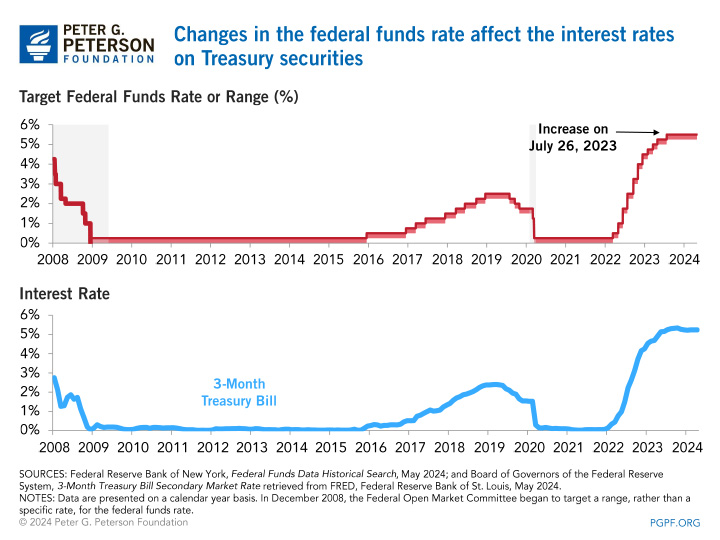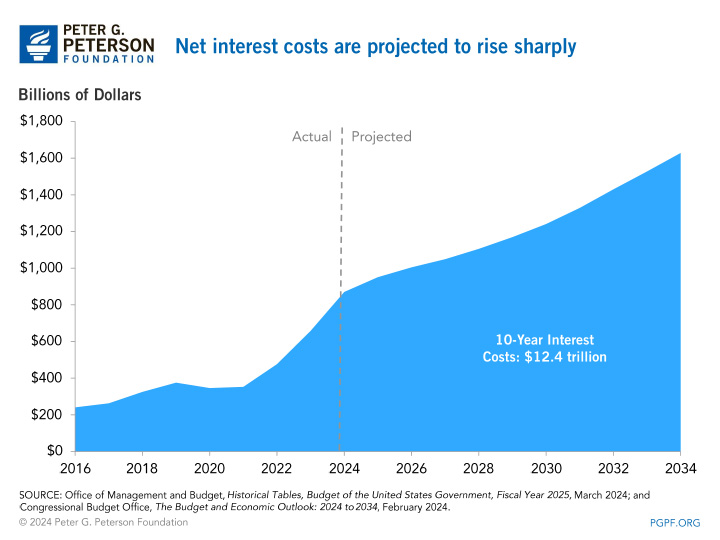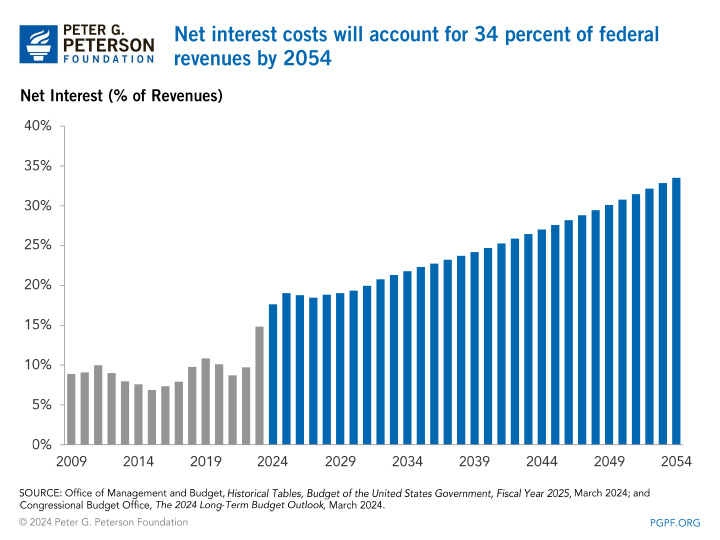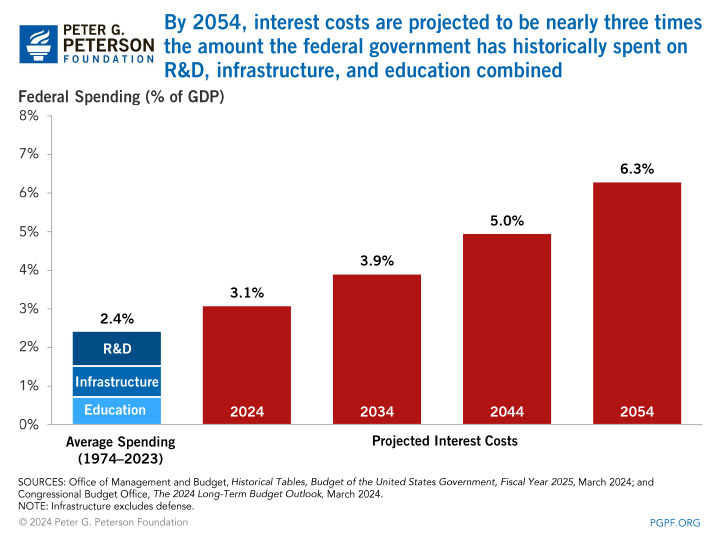You are here
The Federal Reserve has held the federal funds rate, which is the interest rate at which commercial banks lend to one another overnight, steady since July 26, 2023. The federal funds rate is used by the Fed to help control inflation, but the rate also has implications for the federal government’s borrowing costs and therefore the nation’s fiscal picture.
The federal funds rate is the benchmark for Treasury bills and other short-term securities. Adjusting the rate is an important tool for the Federal Reserve to help achieve their statutory mandate, which is to promote the goals of maximum employment, stable prices, and moderate long-term interest rates. Expectations about the short-term rates, combined with other factors, may also affect longer-term rates that are applied to business investment loans and consumer borrowing such as mortgages and car loans.
The central bank raised the federal funds rate seven times in 2022 in an effort to tame rising inflation, after holding them close to zero since the onset of the pandemic. The Fed continued to raise rates four more times in 2023, setting the target range for the rate to between 5.25 and 5.50 percent — a 22-year high. The central bank has held rates at those levels since. Meanwhile, the interest rates on short-term Treasury securities have risen at a similar pace. The rate on 3-month Treasury bills rose from 0.15 percent in early 2022 to 5.24 percent in April 2024.

As interest rates on U.S. Treasury securities rise, so too will the federal government’s borrowing costs. The United States was able to borrow cheaply to respond to the pandemic because interest rates were historically low. However, as the Federal Reserve increased the federal funds rate, short-term rates on Treasury securities rose as well — making some federal borrowing more expensive. Expectations about short-term rates and inflation have already pushed up longer-term rates as well.
In February, the Congressional Budget Office (CBO) projected that annual net interest costs would total $870 billion in 2024 and almost double over the upcoming decade. That is equivalent to soaring from $951 billion in 2025 to $1.6 trillion in 2034 and summing to $12.4 trillion over that period. However, if inflation is higher than CBO’s projections and if the Fed holds interest rates longer than the agency projected, such costs may rise even faster than anticipated.

The growth in interest costs presents a significant challenge in the long-term as well. According to CBO’s projections, interest payments would total around $77 trillion over the next 30 years and would take up 34 percent of all federal revenues by 2054. Interest costs would also become the largest “program” over the next few decades — surpassing defense spending in 2024 and Social Security in 2051.

Ballooning interest costs threaten to crowd out important public investments that can fuel economic growth in the future. CBO estimates that by 2054, interest costs are projected to be nearly three times what the federal government has historically spent on R&D, nondefense infrastructure, and education, combined.

The long-term fiscal challenges facing the United States are serious. Significant borrowing was necessary to respond to the COVID-19 pandemic; however, the structural imbalance between spending and revenues that existed before the pandemic is still large and will grow rapidly in the future. Furthermore, as interest rates rise and the nation’s debt grows, it will become even more expensive to borrow in the future. Congresses and Presidents of both parties, over many years, have avoided making hard choices about our budget and failed to put it on a sustainable path. It is vital for lawmakers to take action on the growing debt to ensure a stable economic future.
